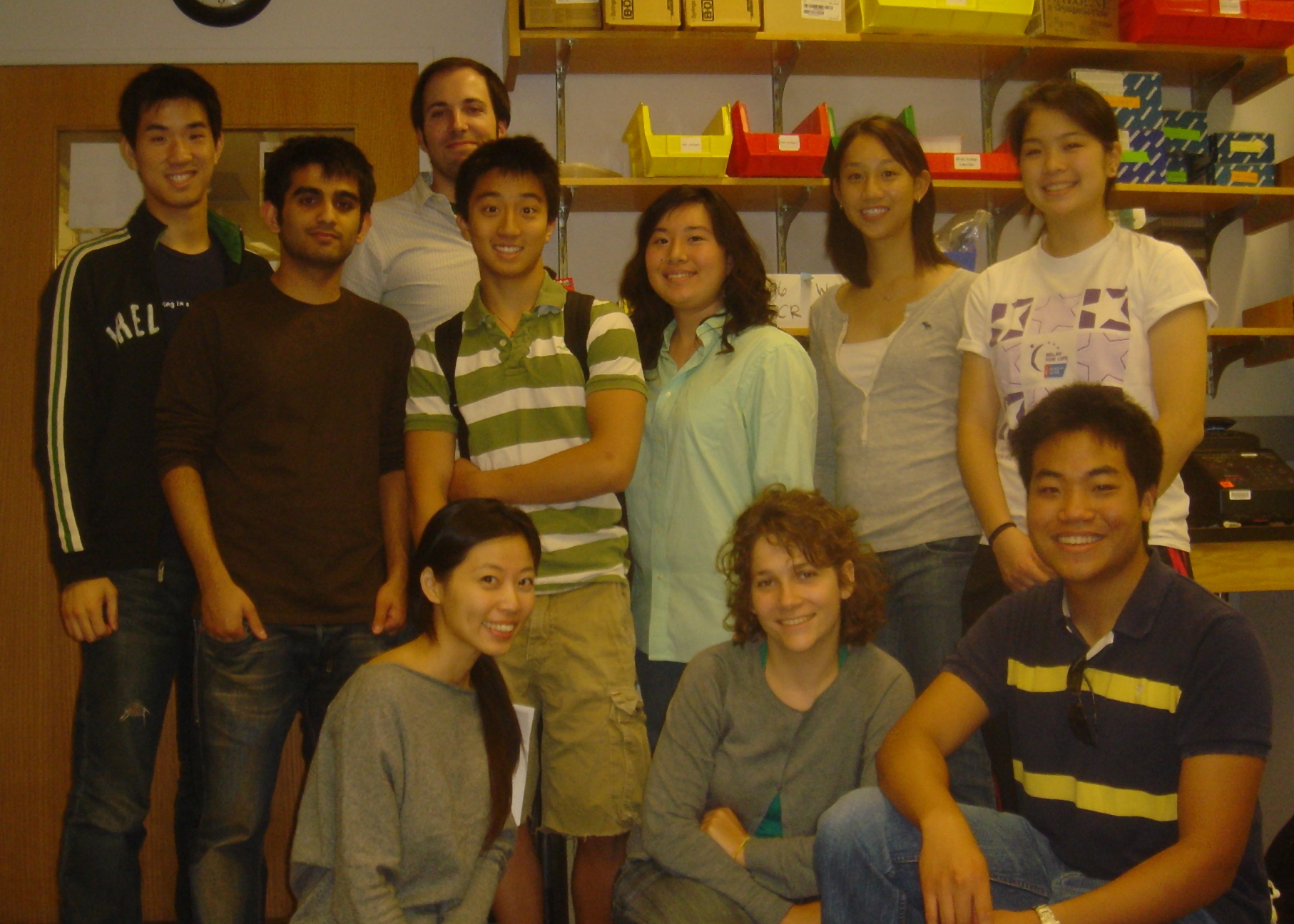MIT
From 2007.igem.org
| Line 2: | Line 2: | ||
Mercury contamination of drinking water is a significant problem in both developped and developping countries. Techniques to filter it out are both costly and intensive. Thus, the MIT iGEM 2007 team is engineering a biological mechanism to cost-effectively sense and remove Mercury ions from contaminated water through a two cell system. One cell will use the Mer promoter to sense the presence of Mercury ions, then activate the GFP fused downstream. The other uses a cell surface display mechanism to exhibit a Mercury capturing peptide, extracting the Mercury from the water. Both cells also display polystyrene binding peptides, and will thus be attached to a polystyrene filter. This setup would be easy to use, cheap to manufacture, and economical to distribute. It could be used from very small scales to even an entire village's drinking water supply. | Mercury contamination of drinking water is a significant problem in both developped and developping countries. Techniques to filter it out are both costly and intensive. Thus, the MIT iGEM 2007 team is engineering a biological mechanism to cost-effectively sense and remove Mercury ions from contaminated water through a two cell system. One cell will use the Mer promoter to sense the presence of Mercury ions, then activate the GFP fused downstream. The other uses a cell surface display mechanism to exhibit a Mercury capturing peptide, extracting the Mercury from the water. Both cells also display polystyrene binding peptides, and will thus be attached to a polystyrene filter. This setup would be easy to use, cheap to manufacture, and economical to distribute. It could be used from very small scales to even an entire village's drinking water supply. | ||
| + | [[Image:IGEM_team.jpg|thumb|500px|The MIT iGEM 2007 team. Top Row: Forrest Liau, Aditya Kohli, Brian Cook, Alex Lue, Semmie Kim, Bernice Huang, Jess Ho. Bottom Row: Debbie Liu, Laure-Anne Ventouras, Toan Tran-Phu]] | ||
Please see our wiki on [http://openwetware.org/wiki/IGEM:MIT/2007 openwetware] | Please see our wiki on [http://openwetware.org/wiki/IGEM:MIT/2007 openwetware] | ||
Revision as of 15:50, 9 August 2007
Project Description
Mercury contamination of drinking water is a significant problem in both developped and developping countries. Techniques to filter it out are both costly and intensive. Thus, the MIT iGEM 2007 team is engineering a biological mechanism to cost-effectively sense and remove Mercury ions from contaminated water through a two cell system. One cell will use the Mer promoter to sense the presence of Mercury ions, then activate the GFP fused downstream. The other uses a cell surface display mechanism to exhibit a Mercury capturing peptide, extracting the Mercury from the water. Both cells also display polystyrene binding peptides, and will thus be attached to a polystyrene filter. This setup would be easy to use, cheap to manufacture, and economical to distribute. It could be used from very small scales to even an entire village's drinking water supply.
Please see our wiki on [http://openwetware.org/wiki/IGEM:MIT/2007 openwetware]
